Rainwater harvesting for village or cluster of villages within shared aquifer: through deep aquifer recharge
India relies heavily on groundwater usage, and it is the world’s largest extractor of groundwater, a depleting resource. It has led to depletion of water levels and serious deterioration of quality, with increasing salinity, high concentration of fluoride, arsenic etc. Rainwater harvesting offers a cost effective and quick solution to communities, societies, schools, individual households etc., to restore and improve their one and common groundwater source.
There are many borewells in India that have either gone dry primarily due to over exploitation, leading to the drying up of aquifers locally. While the hydrogeological conditions still exist to support groundwater accumulation, natural process takes decades and centuries to recharge the deep confined aquifers. However, since the existing defunct borewells already provide an available path to the aquifer structure, it is a convenient location to recharge the groundwater using excess runoff water during monsoon, with suitable minor pipe modifications and filter mechanism. Both, the rooftop rainwater and surface runoff can be used to recharge the groundwater.
In addition to abandoned borewell recharge, recharge structures built in or adjoining village water bodies, river-beds also have vast potential to replenish groundwater and improve its quality, since both of these often have excess water during monsoon, which otherwise floods the surrounding areas and ultimately drains into the sea.
Such recharge structures if constructed across village, village clusters,or whole aquifer area, can bring huge change in water quality and availability, across the area, for all, and bring following benefits:
(i) Groundwater level improves
(ii) Salinity levels decrease
(iii) Pumping costs, drilling costs and water treatment costs are saved, since water has now to be drawn from lesser depth, and it is of better quality.
While individual defunct borewell recharge can be done without much pre-study, for village, cluster or aquifer level sustainable solution, it is useful to do following study and planning:
Aquifer characteristics: There are several strata of different aquifer media such as sand, clay, silt, gravel, rocks and each have different permeable properties. It is important to know at which permeable strata should the filtered rainwater be released. These conditions vary locally and a local geology survey is needed. Often local borewell diggers have a fair idea of local aquifer location and levels. For more systematic hydrogeological study, suitable NGOs or professional agencies can be contacted. WIN Foundation partner – ACT, has substantial expertise in this domain.
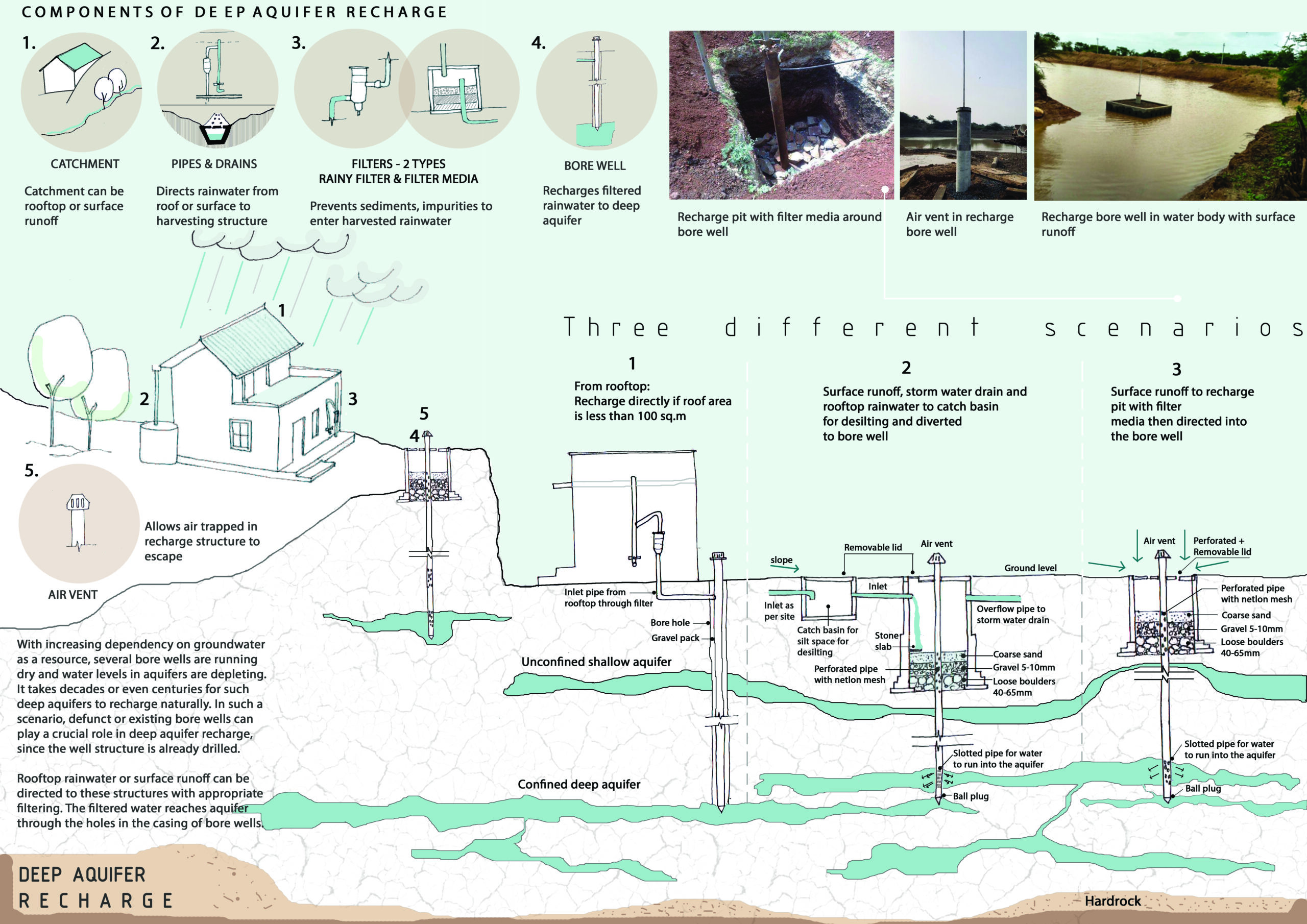
Sources and types:
Rainwater from roof, surface runoff, watershed landscapes, roads or water bodies can be used for recharging deep confined aquifers through borewells. These borewells can be existing functional ones, defunct borewells which have gone dry over time, or newly constructed recharge borewells. Based on runoff water available from various sources, and a combination of water catchment and recharge borewell with suitable filtration, with site specific customisation, can be constructed for maximum recharge and ensure water quality.
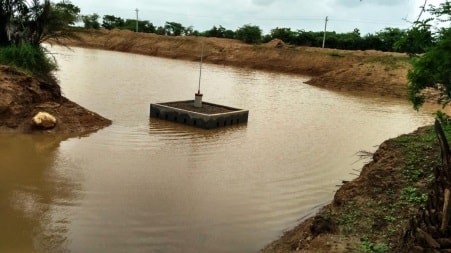
Recharge borewell in water body
Components of borewell recharge:
- Catchment: Catchment is an area within which the rainwater that falls is collected, and its cleanliness m
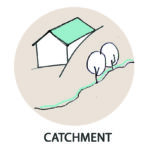 ust be ensured. It can be rooftop or roads, fields or barren land or any landscape. It is important that this water is filtered and removed of impurities and sediments before the water is diverted to the borewell for recharge.
ust be ensured. It can be rooftop or roads, fields or barren land or any landscape. It is important that this water is filtered and removed of impurities and sediments before the water is diverted to the borewell for recharge. - Pipes and drains: Pipes from roof and storm water drains from roads channel rainwater fr
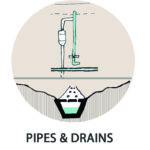 om their respective catchment to the harvesting structure.
om their respective catchment to the harvesting structure. - Filter: For surface runoff or storm water collection, a desilting chamber is the first part where w
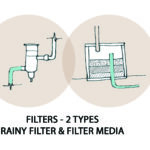 ater reaches with silt and soil. This chamber allows the silt to settle and the overflow reaches filter media of sand, gravel and boulders; from which it enters borewell casing through perforations.
ater reaches with silt and soil. This chamber allows the silt to settle and the overflow reaches filter media of sand, gravel and boulders; from which it enters borewell casing through perforations. - Borewell: Through an existing defunct or newly constructed borewell, the filtered r
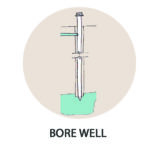 ainwater artificially recharges the deep aquifer. Perforations in the borewell pipe are made at the level of aquifer strata having high permeability like sand or fractured rock, for water to be released in the aquifer.
ainwater artificially recharges the deep aquifer. Perforations in the borewell pipe are made at the level of aquifer strata having high permeability like sand or fractured rock, for water to be released in the aquifer. - Air vent: Air vent is provided to release trapped air in the recharge borewell system.
Maintenance:
- It is important to ensure that the rainwater diverted for recharge does not have impurities. Especially for surface runoff, care must be taken that there are no chemical spillages or open defecation in the catchment.
- For recharging in a functional well, the rooftop as a catchment should be preferred. This way there is control over catchment and its cleanliness can be ensured and supervised. With experts’ consultation one must understand protocols for taking care of the submersible motor, while recharging functional borewell.
- The filter media used should be cleaned well at least once before monsoon season. Similarly pipes and recharge pit should be cleaned to avoid any clogging.
Recharge borewells can play a crucial role in decentralised water conservation and management. They help in increasing groundwater tables for deep aquifers and improving the water quality. For agriculture practices that are heavily dependent on groundwater as their source of irrigation, it should be a must to identify defunct and abandoned borewells and implement recharge solutions.
Interested in adopting recharge systems in your village or set of villages?
Whether you are an NGO or Foundation working in water, or Gram Panchayat or a Government official working to improve water conservation practices, and if you are keen to adopt the rain water harvesting and recharge of ground water, to improve water security in sustainable and long term manner, feel to contact us for any guidance or additional information, at info@winfoundations.org
WIN Foundation provides this guidance at no cost.


